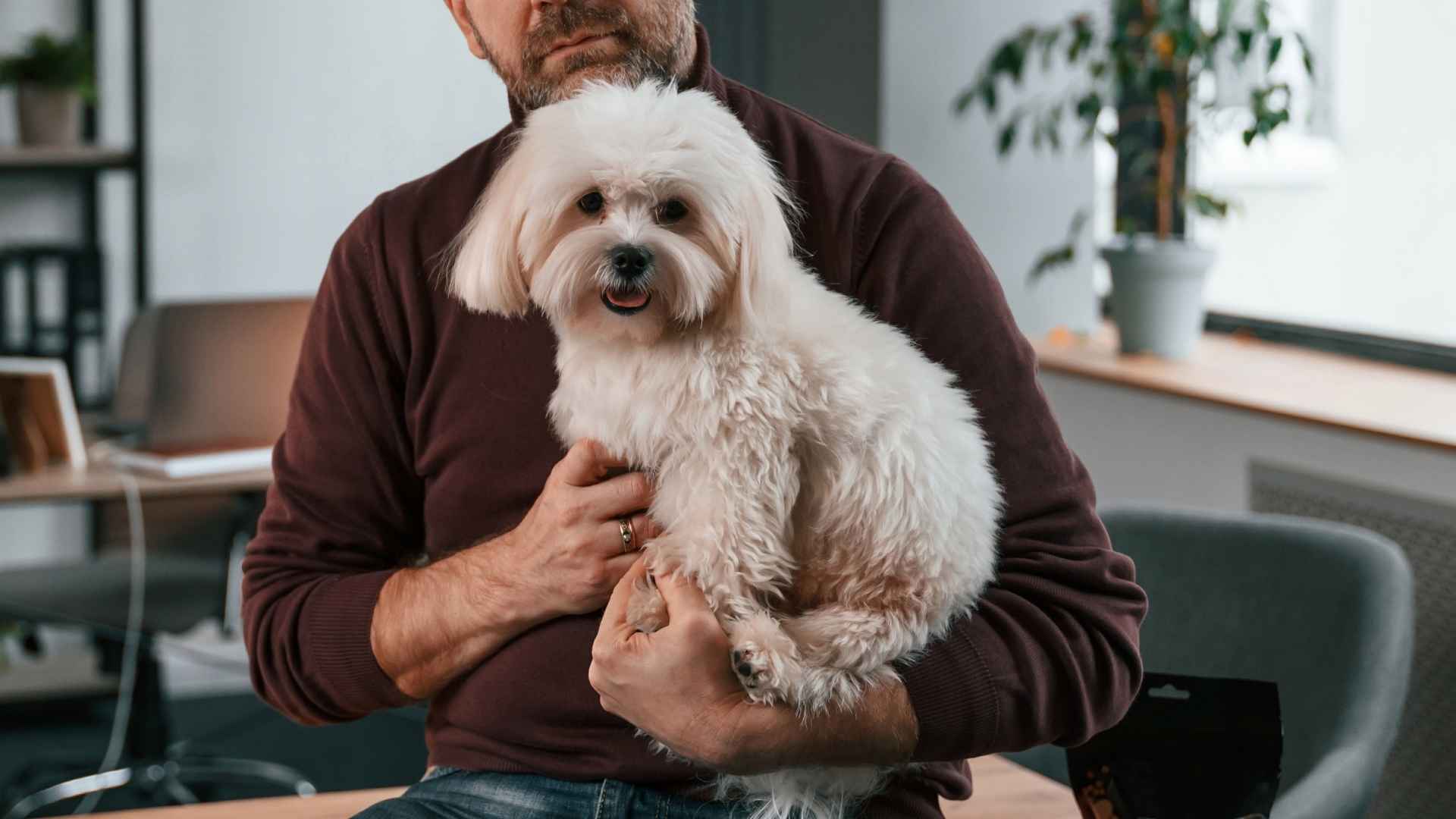Not every dog owner is looking for a jogging partner or a daily grooming project. For many people with tight schedules, limited mobility, or a preference for calm companions, low-maintenance dogs offer a practical and deeply rewarding pet experience. While no dog is truly maintenance-free, certain breeds require significantly less day-to-day effort in terms of exercise, grooming, and emotional upkeep.
Low-maintenance dogs tend to have relaxed temperaments, modest activity needs, and coats that are easy to care for. These breeds are often content with a few short walks, some light interaction, and ample time to rest by your side. That makes them well-suited to first-time dog owners, seniors, apartment dwellers, or anyone who simply prefers a more laid-back canine companion.
It’s important to note that even easy-going dogs still need proper care—balanced nutrition, routine vet visits, and meaningful companionship. However, the breeds in this guide are widely recognized by professionals and experienced pet owners alike for their minimal demands.
Whether you’re juggling a busy lifestyle or simply want a calm and manageable companion, these breeds deliver companionship without complexity.
Least Demanding Dog Breeds
1. French Bulldog
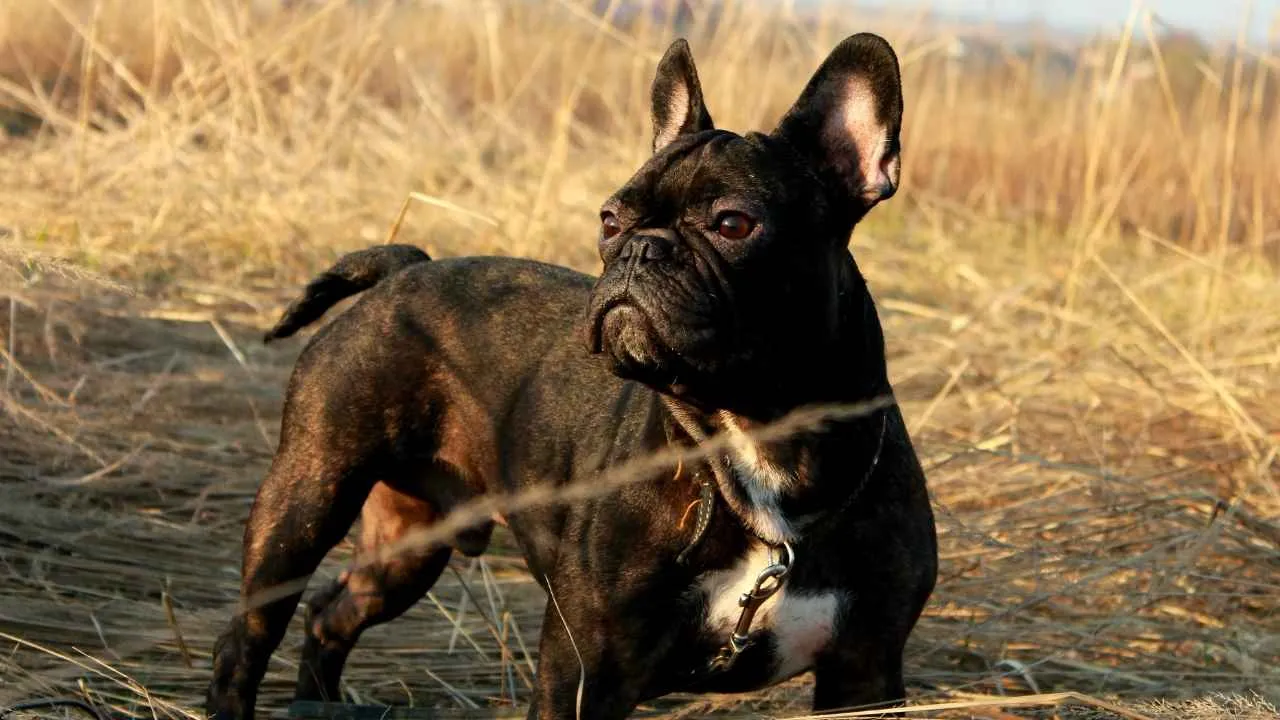
The French Bulldog is a compact companion dog developed primarily for urban living. With a calm disposition and modest exercise needs, it ranks among the most manageable breeds for busy households. Its sturdy frame and moderate size make it well-suited to small spaces.
This breed requires only light physical activity, such as short daily walks or indoor play. It does not demand intensive routines or high endurance tasks. According to the AKC, the breed thrives on human interaction but adjusts well to a consistent, low-energy environment.
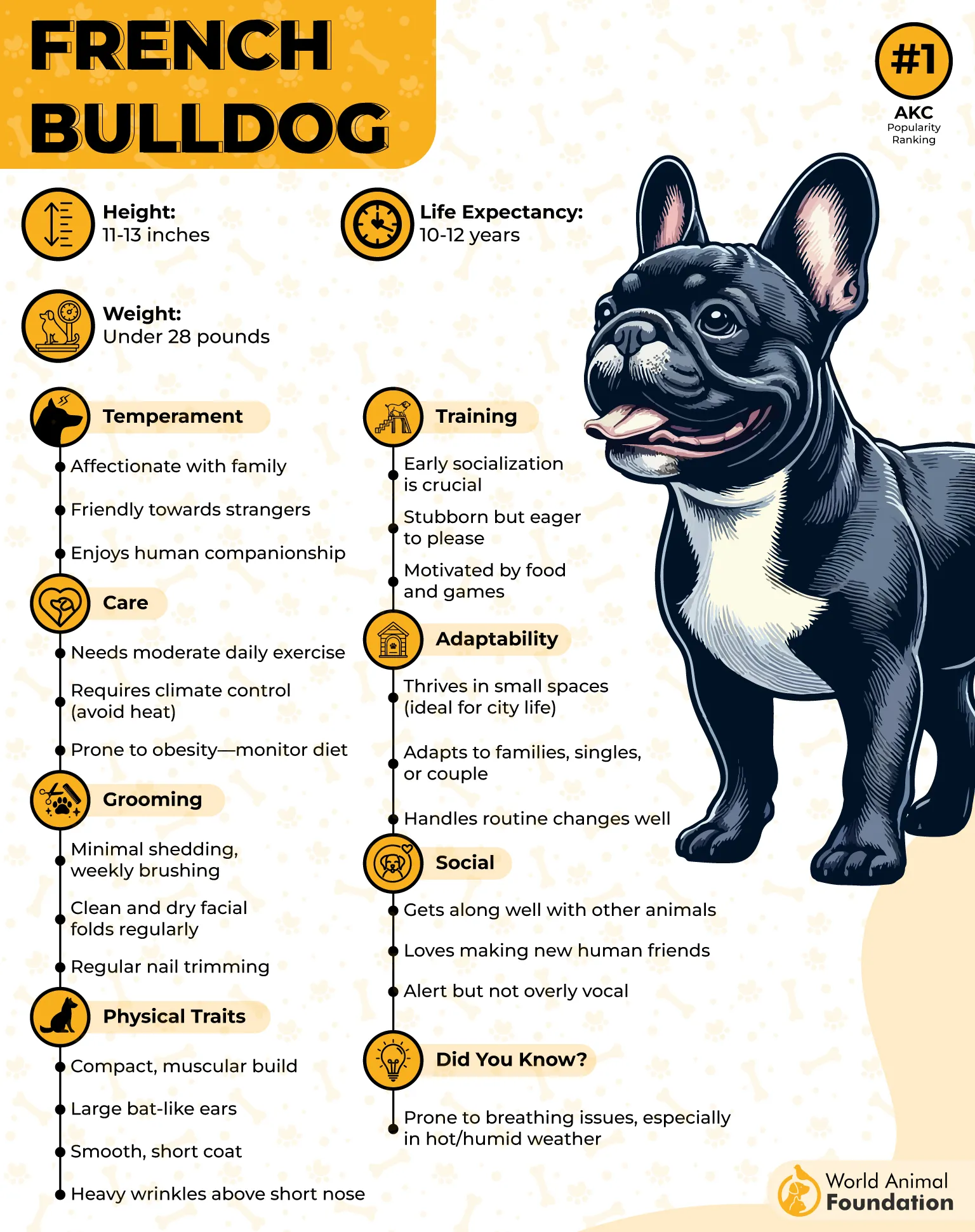
Grooming is minimal, thanks to a short, smooth coat that sheds moderately and requires only weekly brushing. Nail trimming, basic ear care, and occasional bathing are typically sufficient to maintain hygiene. Regular vet checks are important to monitor skin folds and respiratory health.
French Bulldogs are intelligent but may exhibit willful tendencies. Basic obedience is achievable with patience and positive reinforcement. They are generally quiet and socially adaptable, though early training is advised to manage stubborn streaks.
Due to their brachycephalic anatomy, they are prone to heat sensitivity and should be protected from high temperatures. Proper ventilation, indoor living, and gentle exercise routines help mitigate these risks.
Quick Tips
Avoid strenuous activity in hot weather
Stick to short, structured training sessions
Use a harness to prevent airway pressure
2. Shih Tzu
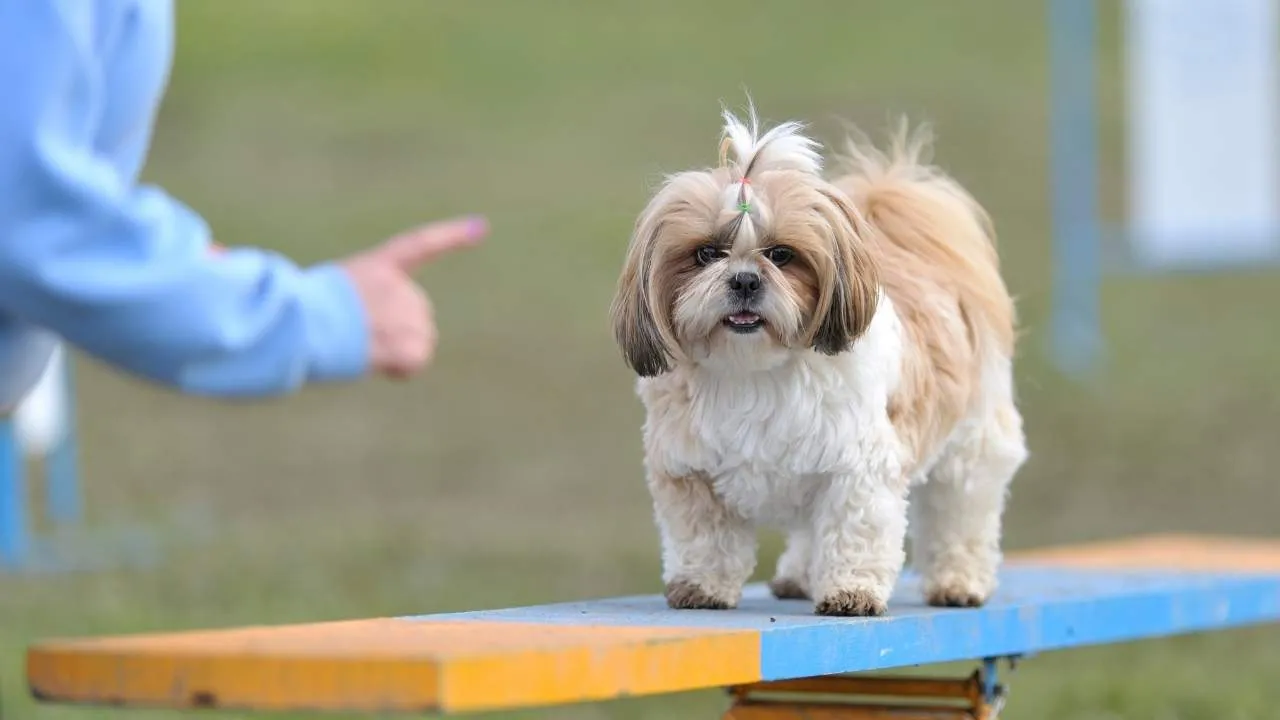
The Shih Tzu is a toy breed originally bred as a lapdog for Chinese royalty. Its small stature and affectionate temperament make it an ideal companion for apartment dwellers and first-time owners. This breed is best known for its friendly, people-focused nature.
While their long, flowing coat may appear high-maintenance, Shih Tzus shed minimally and can be kept in a short “puppy cut” for easier grooming. Daily brushing is recommended for long coats, but trimmed coats require less upkeep. Regular eye cleaning and face wiping are essential due to their prominent eyes.
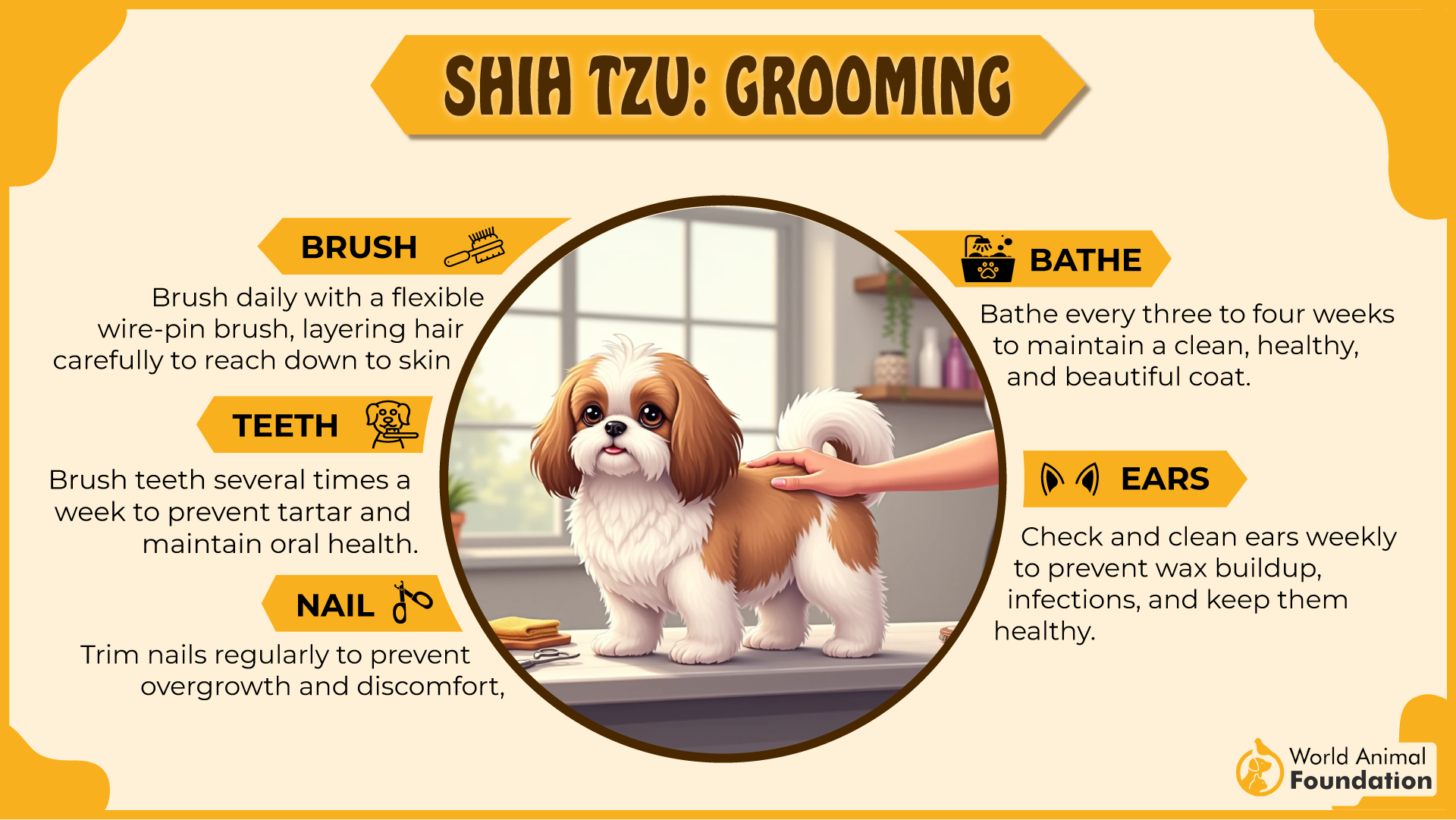
Exercise needs are modest. A couple of short walks per day and indoor play are usually enough to keep them healthy. Shih Tzus are not demanding in terms of mental stimulation and prefer lounging with their people over intense activity.
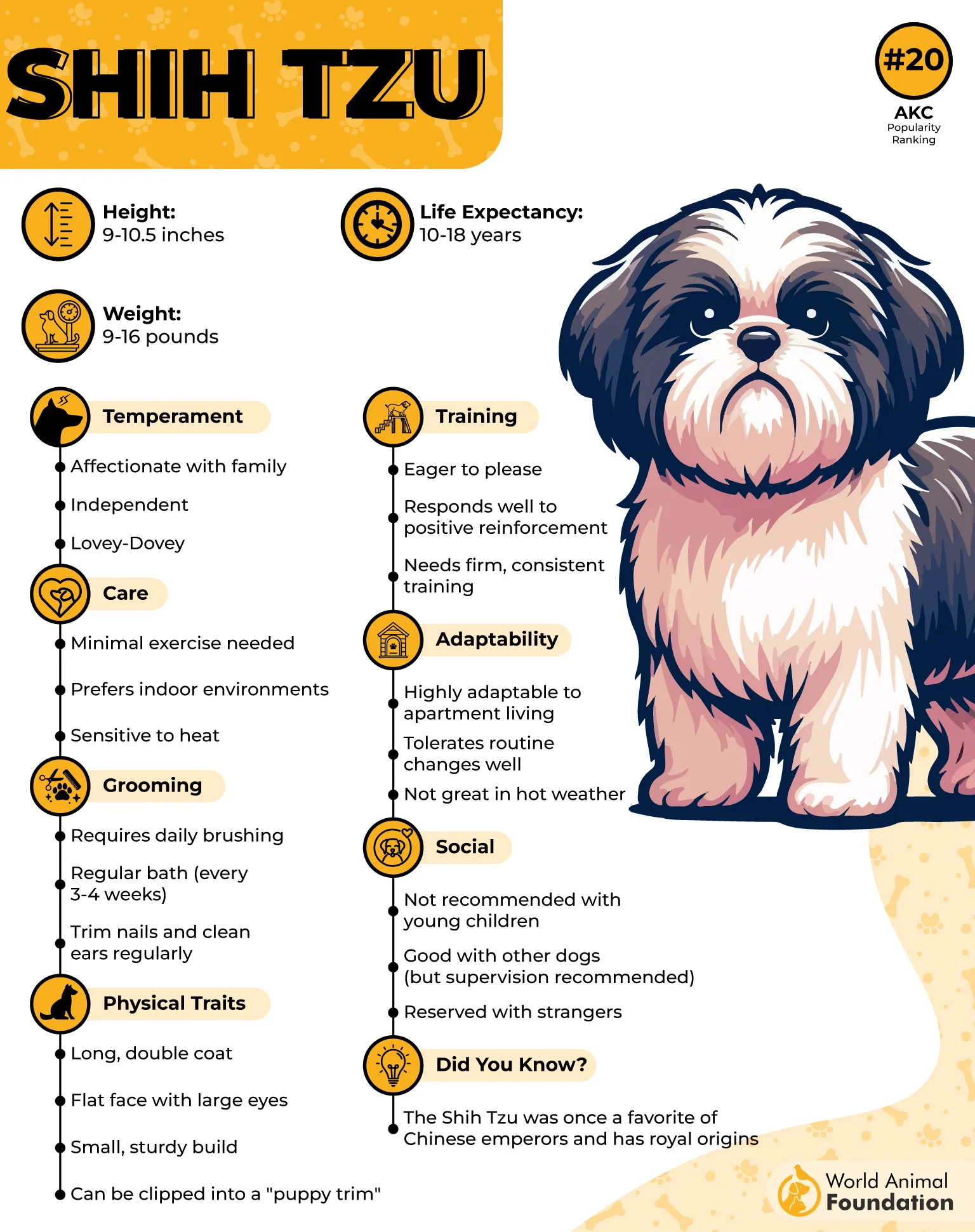
Training is generally straightforward. Shih Tzus respond well to consistent, gentle guidance. Their calm demeanor means they are unlikely to become destructive or hyperactive when left alone for short periods.
The breed is generally healthy, though they may be prone to eye issues and brachycephalic respiratory challenges. Regular vet visits help manage age-related and breed-specific concerns.
Quick Tips
Keep face clean to prevent tear staining
Use gentle commands and rewards when training
Opt for shorter haircuts to simplify coat care
3. Basset Hound
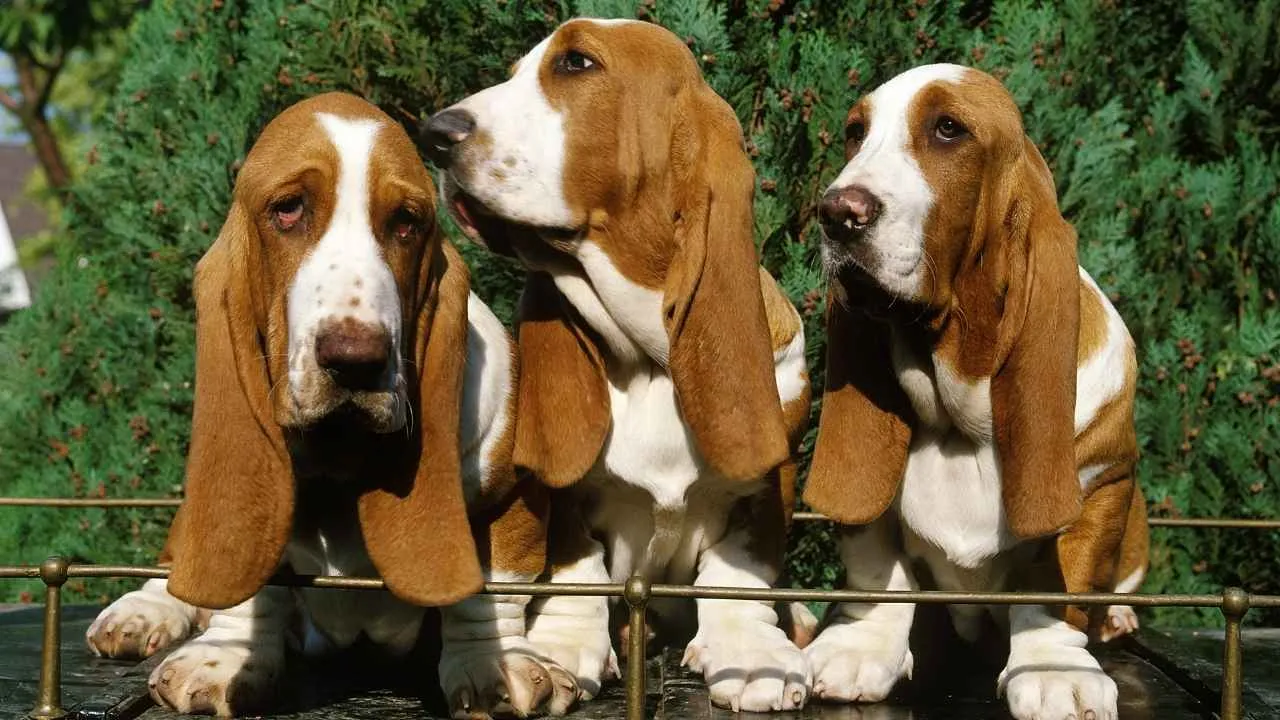
The Basset Hound is a scent-tracking hound with a mellow disposition and a distinctive, low-set body. Known for its droopy ears and soulful eyes, this breed is content with a relaxed routine and is well-suited to laid-back households.
Exercise requirements are modest. A slow-paced walk or two per day is typically sufficient. Their short legs and long bodies make them prone to joint strain, so strenuous activity should be avoided. As stated by PetMD, they benefit from controlled movement and soft surfaces.
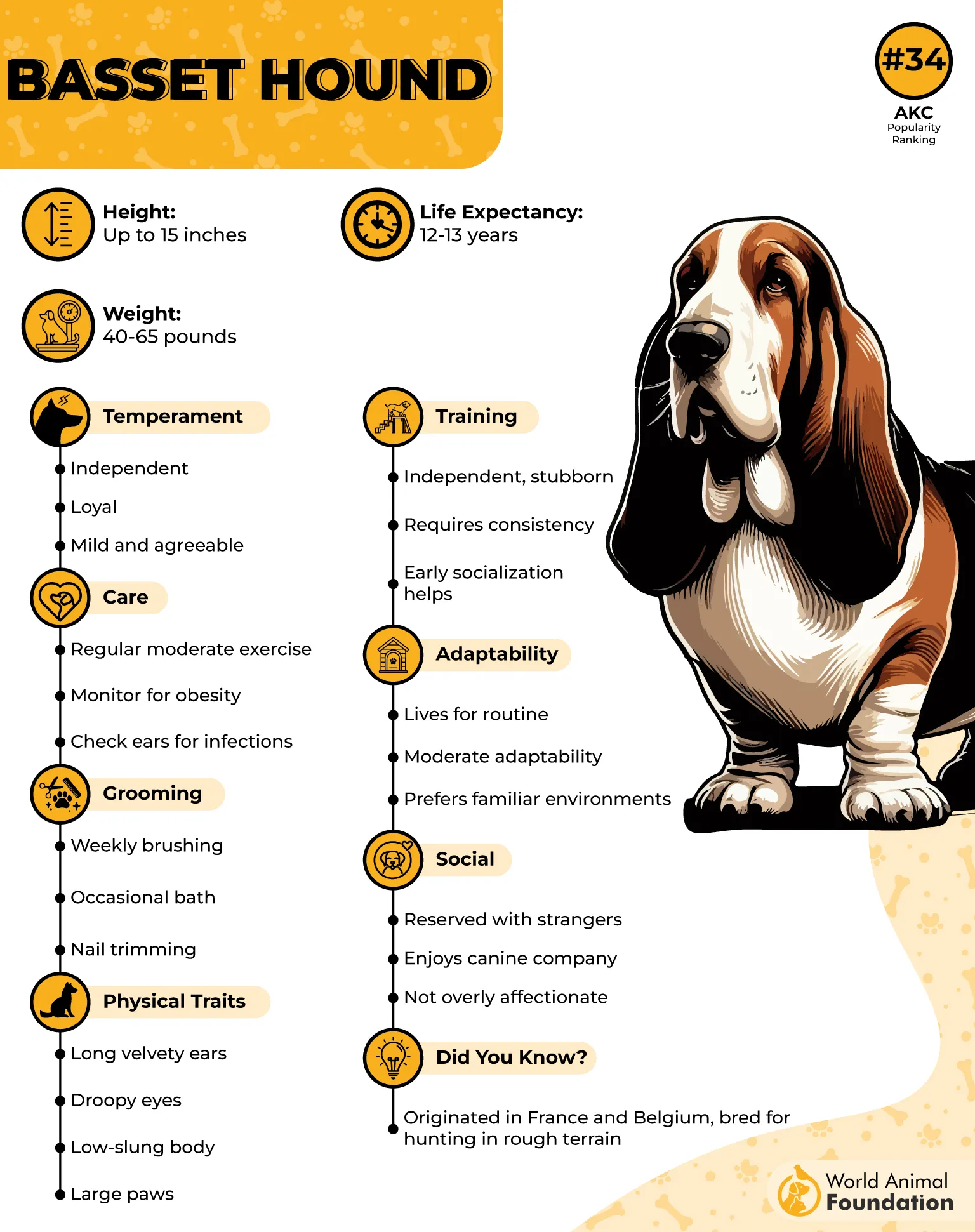
Bassets are low-maintenance in grooming, requiring only occasional brushing to manage shedding. However, their ears need weekly cleaning due to poor airflow and susceptibility to infections. Regular nail trims are also necessary due to their low ground clearance.
They are intelligent but often described as independent thinkers. While this can make training more challenging, food rewards and short, positive sessions help maintain engagement. Patience is essential when working with this breed.
Their calm temperament makes them a good fit for families or older adults. They can be vocal, using their deep bay to alert or express boredom, so mental enrichment is useful even with lower activity levels.
Quick Tips
Clean ears regularly to prevent infections
Use treats to encourage cooperation in training
Avoid stairs and jumping to protect joints
4. Chihuahua
The Chihuahua is one of the smallest dog breeds but carries a bold and confident personality. Its compact size and minimal grooming needs make it exceptionally well-suited to people with limited space or mobility.
This breed requires very little exercise. A few minutes of play indoors or a brief walk is enough to meet its energy needs. Chihuahuas often get their activity through daily routines and don’t need structured outings to stay healthy.
Their coat comes in both smooth and long varieties. Smooth-coated Chihuahuas need only occasional brushing, while the long-coated version benefits from a weekly grooming session. Bathing and nail trims are low-frequency tasks.
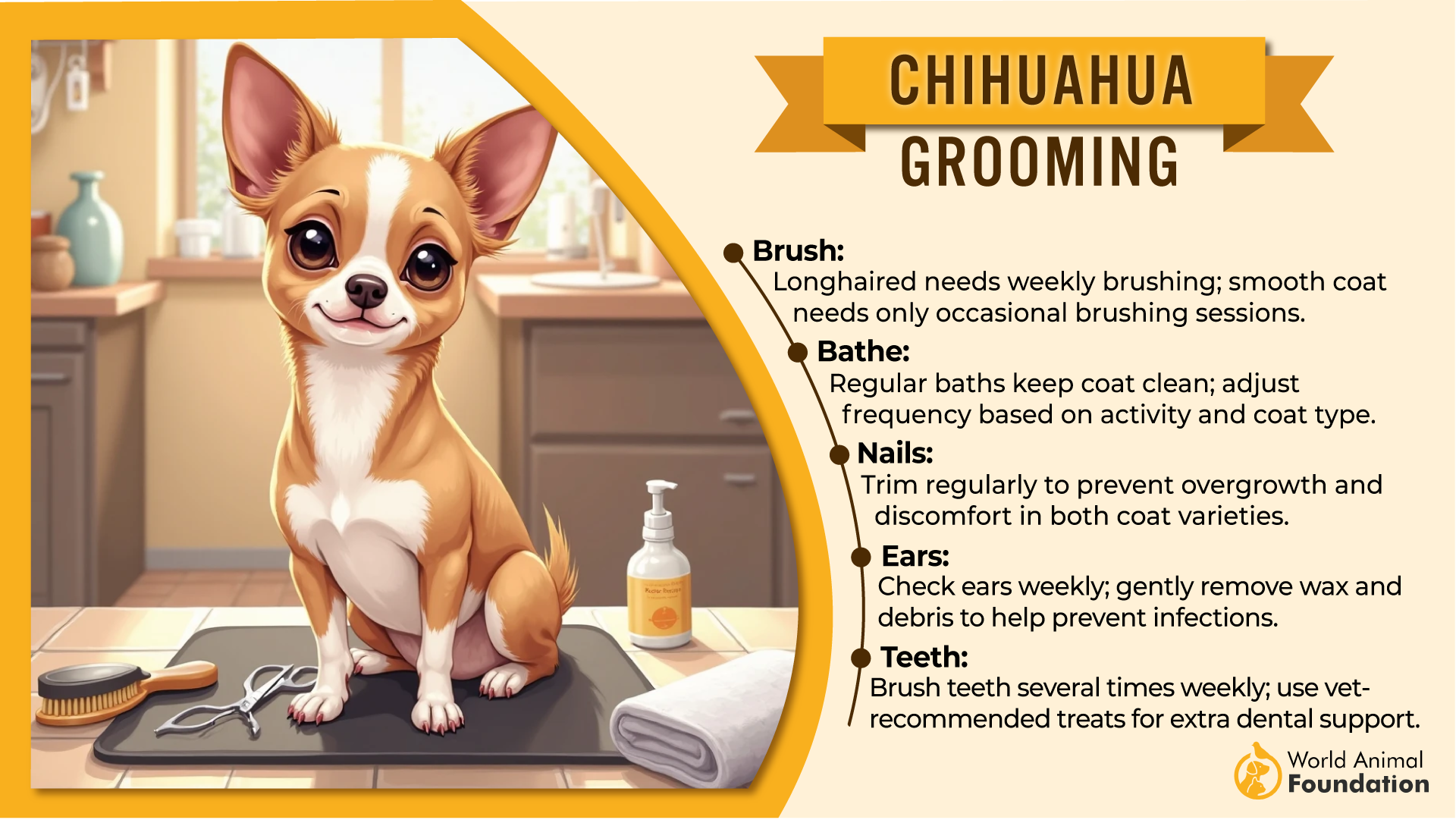
Chihuahuas are highly alert and loyal, though they may be wary of strangers. Their strong bond with one or two family members can lead to protective behavior. Early socialization helps reduce reactivity and anxiety.
Training is easy when approached with consistency and gentle reinforcement. Their small size can encourage overindulgence, so it’s important to establish structure and prevent excessive barking or guarding behaviors.
Quick Tips
Socialize early to prevent reactivity
Use soft bedding to support joints
Monitor for dental issues common in toy breeds
5. Cavalier King Charles Spaniel
The Cavalier King Charles Spaniel is a gentle, affectionate breed originally developed for companionship. It’s well-known for its calm temperament and adaptability, making it an ideal dog for novice owners or apartment living. They are consistently ranked among the top companion breeds for a reason.
Their silky coat requires moderate grooming. Brushing several times a week keeps it free of tangles, and occasional baths maintain coat health. Their grooming routine is manageable and doesn’t demand professional intervention unless preferred.
These dogs are not overly active. A daily walk and brief play session are typically enough to satisfy their exercise needs. Their gentle nature also makes them well-suited for households with children or seniors.
Training is straightforward due to their eagerness to please. They respond well to positive reinforcement and are quick to pick up on routines. Cavaliers are less prone to behavioral issues compared to more independent breeds.
Health monitoring is essential, as they are predisposed to heart conditions. Regular vet visits and weight management help maintain their well-being long-term.
Quick Tips
Brush coat 3–4 times per week
Monitor heart health with routine checkups
Use soft voice commands and consistent routines
6. Pug
Pugs are compact, sociable dogs known for their comical expressions and charming personalities. They thrive on human companionship and are particularly suited to apartment dwellers or people seeking a laid-back companion.
Exercise needs are minimal. Short walks and indoor play suffice. As VCA Animal Hospitals notes, their brachycephalic (flat-faced) structure makes them prone to overheating, so moderate activity is safest.
Their short coat is low-maintenance, requiring weekly brushing to manage shedding. Facial wrinkles should be cleaned regularly to avoid infection. Their grooming regimen is simple compared to long-haired or double-coated breeds.
Pugs are generally easy to train, especially when motivated by food. Their sensitivity and playful spirit make them cooperative, though they can be stubborn at times.
Due to potential breathing and weight issues, owners should avoid overfeeding and keep Pugs cool in warmer weather. They are also prone to eye injuries, so supervision is wise during play.
Quick Tips
Avoid strenuous activity in hot weather
Keep wrinkles clean to prevent irritation
Use food rewards for efficient training
7. Boston Terrier
The Boston Terrier is a small, friendly breed with a cheerful disposition and an easy-care routine. Often referred to as “the American Gentleman,” this breed blends spunk with sociability, making it a favorite among urban pet owners.
Its short, smooth coat requires minimal grooming—just occasional brushing and regular face wiping. Their grooming requirements are among the lowest of any breed.
Boston Terriers are moderate in energy. They enjoy short walks and interactive play but don’t require extended outdoor activity. Their enthusiasm is easily satisfied with routine stimulation.
They are quick learners, especially when training involves praise or food. Their intelligence and eagerness to engage make them ideal for owners seeking a trainable yet relaxed pet.
Though generally healthy, they can experience respiratory challenges due to their short snout. Keep activity light in hot or humid weather and maintain a healthy weight to minimize health risks.
Quick Tips
Monitor breathing during play or heat
Keep indoor toys handy for daily stimulation
Use brief, engaging training sessions
8. Italian Greyhound
The Italian Greyhound is a slender, elegant breed with a surprisingly low-maintenance profile. Despite their refined appearance, they are sturdy, affectionate dogs who thrive in quiet households and urban environments.
Exercise needs are modest. A daily walk and occasional sprint around a secure yard meet their physical requirements. They enjoy lounging just as much as activity.
Their short coat sheds little and requires minimal grooming—typically just a wipe-down and occasional bath. Their thin coat and low body fat mean they are sensitive to cold and need indoor living with occasional sweater use in winter.
Italian Greyhounds are intelligent but can be sensitive. They respond well to gentle, reward-based training, though housebreaking may take time. Patience and routine help reinforce behaviors.
Bonding closely with their humans, they are content as lapdogs and are less likely to develop destructive behaviors if given attention and soft handling.
Quick Tips
Provide warm bedding and clothing in cold weather
Use gentle voice cues during training
Stick to indoor activities when possible
9. Maltese
Maltese dogs are among the oldest toy breeds, long celebrated for their loyalty and manageable size. These affectionate lapdogs form tight bonds with their families and thrive in calm, indoor environments.
While their long white coat appear high-maintenance, many owners opt for shorter cuts that require only a few minutes of brushing each week. According to Hill’s Pet, the breed’s grooming needs can be adapted to suit your schedule.
Daily exercise is limited to short walks and indoor play. Maltese are naturally content with a slower pace, making them perfect for seniors or less active individuals.
They are alert but rarely aggressive. Their social disposition makes them easy to train using light cues and positive reinforcement. They are sensitive to tone, so firm correction isn’t necessary.
Though generally healthy, Maltese may be prone to dental issues and tear staining. Regular tooth brushing and facial hygiene are part of their basic care routine.
Quick Tips
Choose a shorter trim for easier coat care
Brush teeth regularly to prevent oral issues
Keep eyes clean to minimize staining
Conclusion
Choosing a low-maintenance dog breed can bring joy and companionship without overwhelming your schedule. Whether you prefer a petite dog breed or a large dog with a gentle giant personality, there’s a perfect low-maintenance dog for nearly every household. These breeds often require just a few baths, regular brushing, and a daily dose of affection and light activity.
Some of the best low-maintenance dogs are fairly lazy, even-tempered, and totally devoted to their humans. They tend to be minimal shedders or have medium-length coats that only need a quick brush to stay in shape. Their adaptable dog nature makes them excellent around small children, other pets, and other dogs.
From the perfect lap dog with a shortened muzzle to a medium-sized dog that thrives with enough exercise, these breeds require basic care, good food, regular exercise, and basic training. While there’s no such thing as a maintenance-free dog, these breeds come close.
For busy pet parents, these loyal, sweet-tempered, and great companions strike the balance between loving presence and low demand. Whether you’re avoiding the professional groomer or simply seeking a low-maintenance breed, the right dog is out there, ready to keep your coat healthy, your couch warm, and your heart full.


